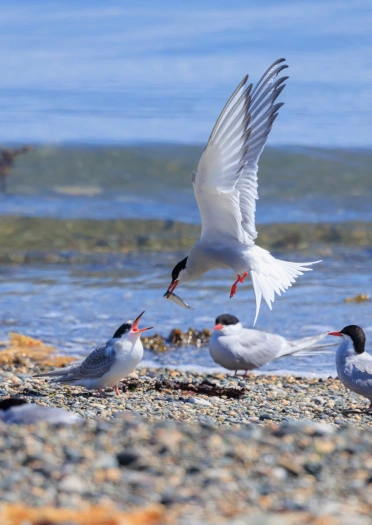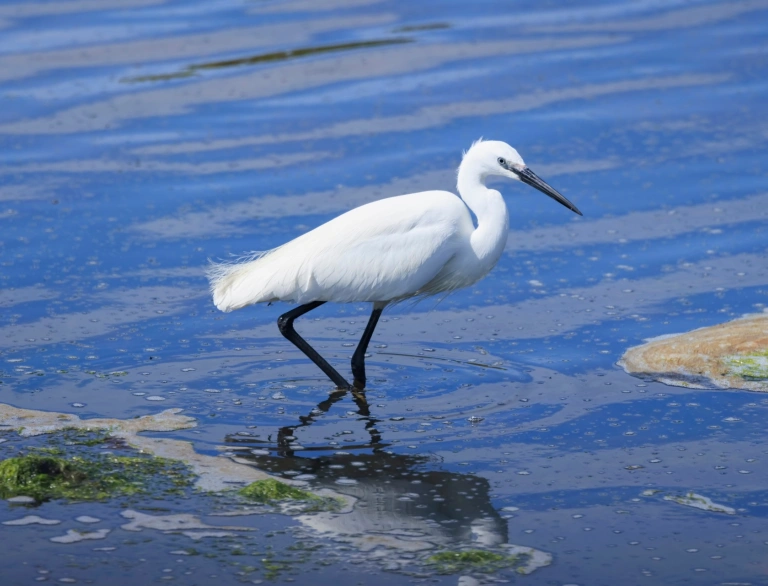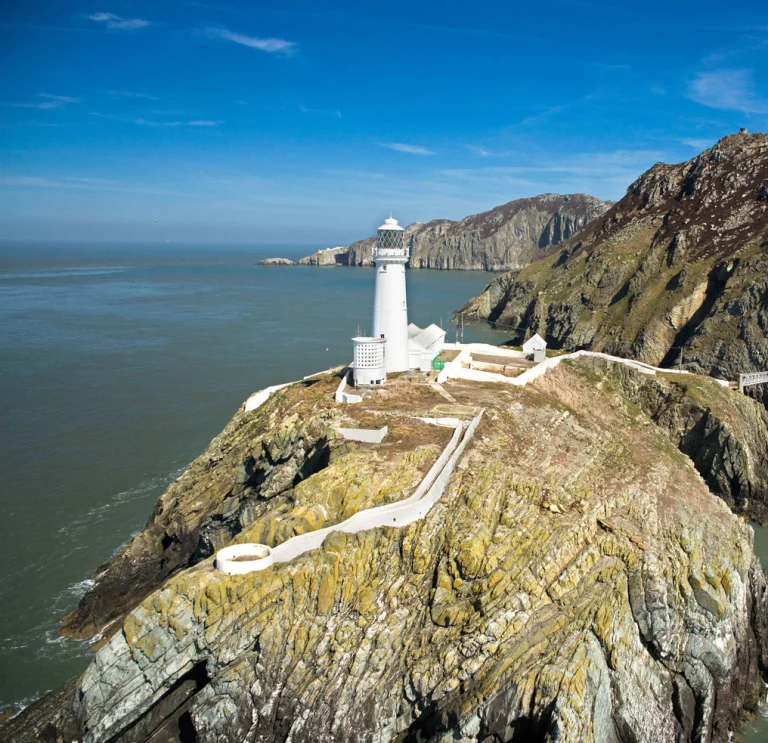I have managed to carve a career out of extolling the delights of observing nature in built-up areas. The scrublands are brownfield sites and the watercourses I cross sometimes contain shopping trollies. But I’ll let you into a secret. I am a country boy trapped in the body of a city hipster. It’s a weird state of suspended animation – a Lindo limbo, if you like.
The contrast between my home patch around Wormwood Scrubs and the Isle of Anglesey at the north-west tip of Wales, could not be more pronounced. Blue skies and a warm autumn sun welcome me across the Menai Strait. It’s as if the car took off somewhere along the M42 and flew me straight to an undiscovered corner of the Mediterranean.
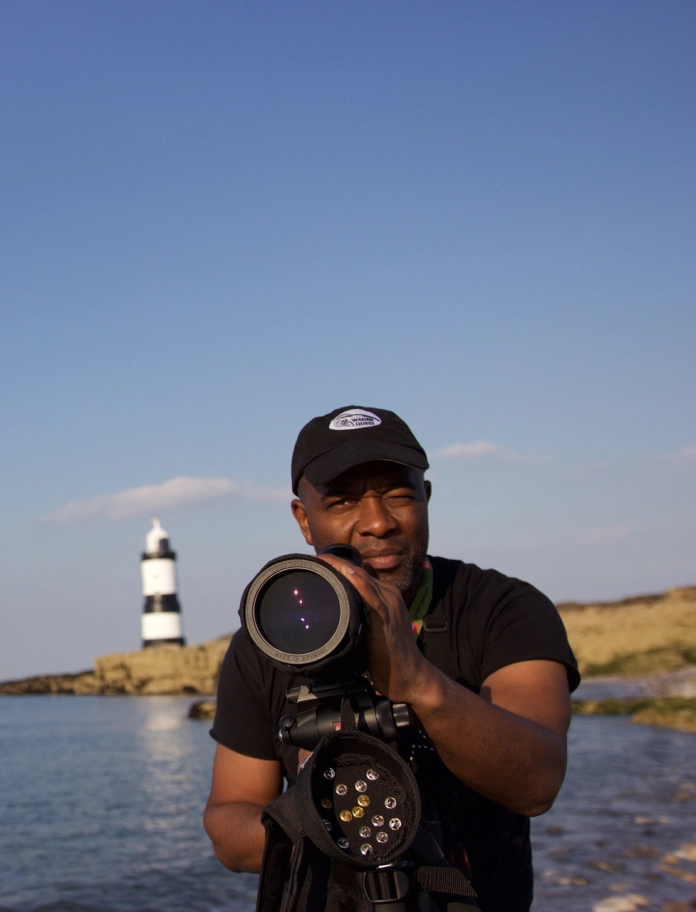
David LindoMy excitement at returning to Anglesey is framed by past experiences. I’m already aware that Britain’s fifth largest island is more than capable of delivering avian surprises.
The first time I raised a pair of binoculars in the general direction of a bird here was in June 2003. I had made a last minute decision to travel all the way up to South Stack to twitch the black lark. This starling-sized waif is usually found shuffling around the inhospitable steppes of Kazakhstan, rather than hanging out on the sheep-cropped grass in front of an audience of several hundred people. In fact, there had never been a recorded sighting of the black lark on British soil.
I drove from west London to Anglesey in the dead of night, arriving at daybreak. While my travelling partner went in search of the bird, I shamefully snoozed in the car until he spotted it – and its assembled audience. I woke up with a start, saw the lark for 10 minutes, leapt into the car and drove straight back to London. That turned out to be my last blatant twitch and my last visit to Anglesey. Or so I thought.
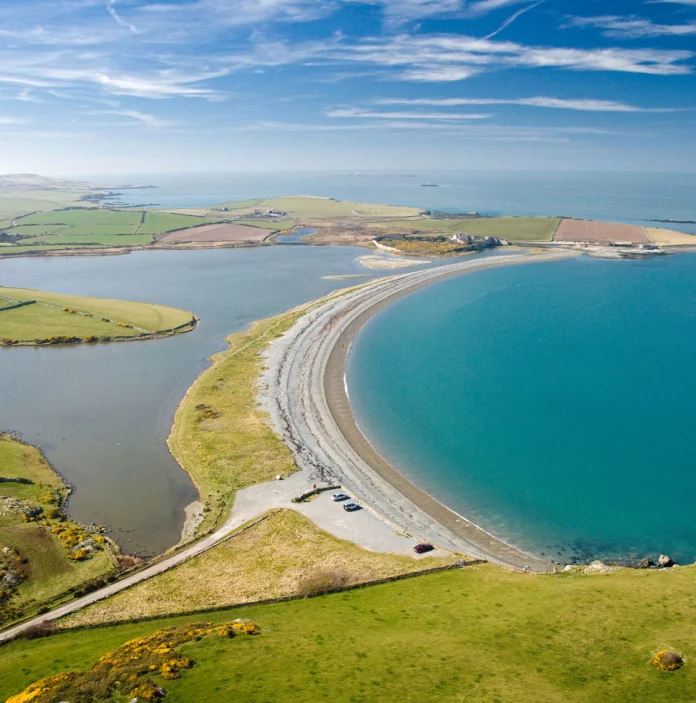
Twenty years later and the grand total of zero black larks since, here I am again. And this time, I’m determined to make every minute count. I greet the rising sun over the mudflats and encroaching sea at Red Wharf Bay. I find myself in the company of ubiquitous oystercatchers probing the mud, alongside curlews, ringed plover and a solitary grey plover. Thickets of woodland behind me harbour the vocalists of a dawn chorus that’s just about to erupt.
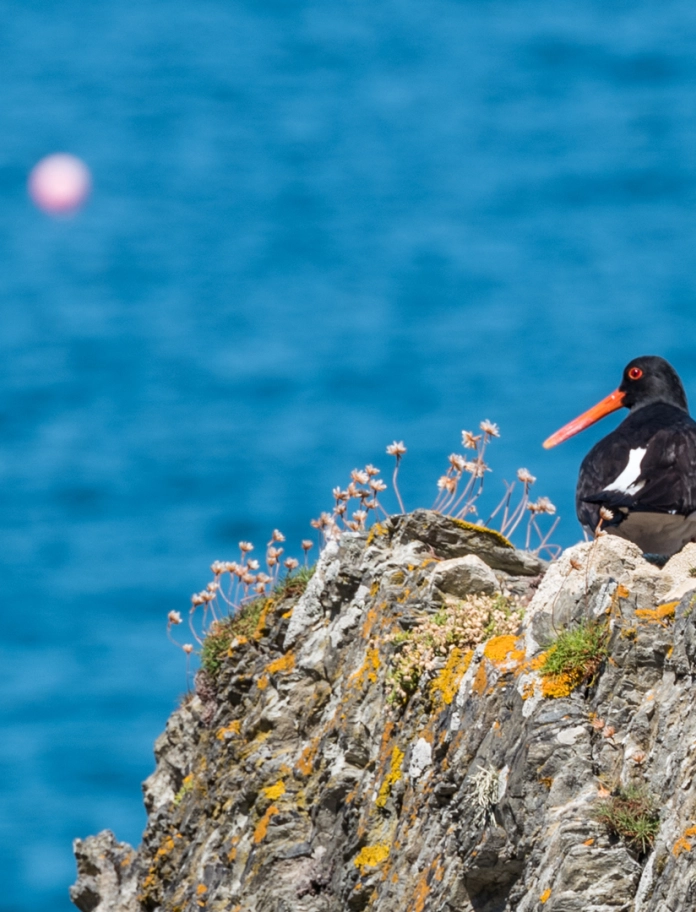
Trees buzz with blue tits busily gleaning insects in the morning glow. Their communal chattering is drowned out by the melancholic song of a robin, Britain’s newly-appointed national bird. The autumn sunrise is glorious. Over the next 24 hours I stroll around various stretches of the Anglesey coast. A couple of things hit me straight away.
First is that the Wales Coast Path is a big deal. Everyone I meet is aware of the fact that the coast of Wales has never been more accessible for people to stride, stroll or just sit and contemplate. The other thing is that when I stop for a chat with fellow birdwatchers on Malltraeth Cob (they do love a chat), they seem genuinely puzzled to find The Urban Birder in such a rural setting. 'What are you looking for?' they ask. It’s hard to answer that question without sounding awkward. My philosophy is that if you go looking for something in particular, you’re bound to miss a host of other surprises. Narrowing your field of vision is not good in any walk of life, as far as I’m concerned. Even though it sounds a bit smart-ass, the simple answer is this: whatever’s out there. I can delight in the sight of a meadow pipit ducking and diving among the beautiful dunes of Aberffraw. I’m equally happy to stand opposite a bus stop in Beaumaris watching an assortment of waders go about their business.
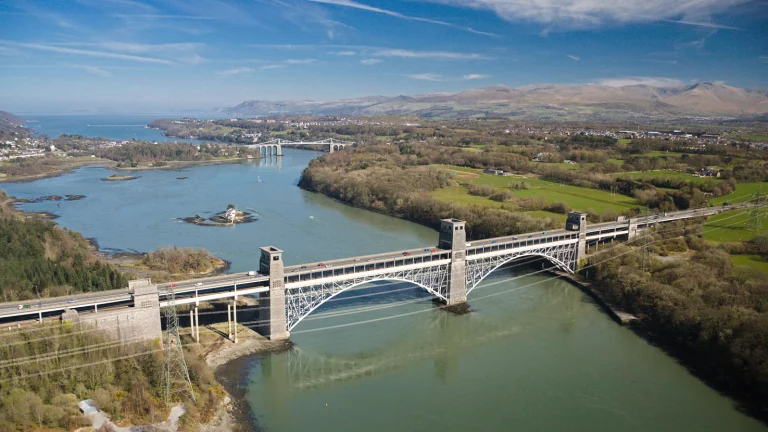
The 13-mile (20km) walk along the Wales Coast Path from Malltraeth to Aberffraw takes in RSPB Cors Ddyga, made famous by the paintings of Charles Tunnicliffe. You also pass through Newborough Forest and Warren, which are adventure playgrounds for any nature lover.
Around the striking black-and white striped Trwyn Du (Black Nose) lighthouse at Penmon Point, rock pipits proclaim their existence while herring gulls patrol the coastal rocks. A few flaps of a gull’s wings away is Puffin Island, which attracts over 750 pairs of cormorant, as well as guillemot, razorbill and kittiwake. The numbers of puffin are also on the rise, after nearly being wiped out by an infestation of rats.
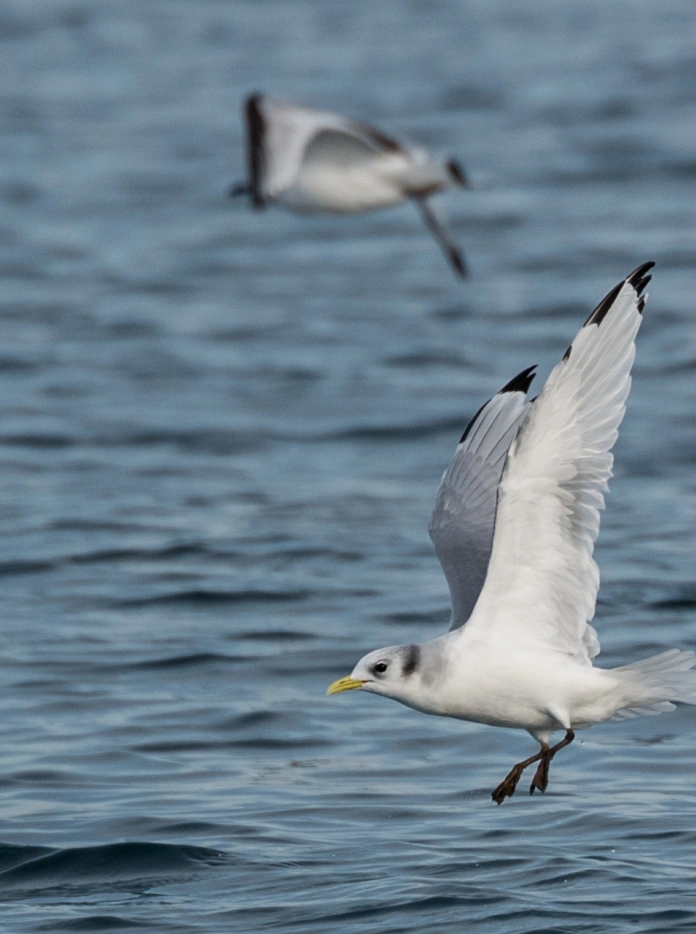
From Penmon I head diagonally across Anglesey for the hallowed turf that the legendary black lark once stood upon. As we approach the imposing outcrop of South Stack, an enveloping grey cloak covers the clear blue sky. The welcome from the RSPB staff in the Visitor Centre is warm and the choughs, South Stack’s emblematic bird, put on a superb display.
Choughs are essentially crows with red legs and a curious decurved red bill that they use to probe the soil for insects and larvae. They nest in rock faces, caves and old buildings and the RSPB estimates that there are between 250 to 350 breeding pairs in Britain. There’s something about their showy aerial acrobatics and busy demeanor that brings a smile to people’s faces.
Leaving South Stack I have one more itch to scratch before my last rewarding supper at a local eatery.
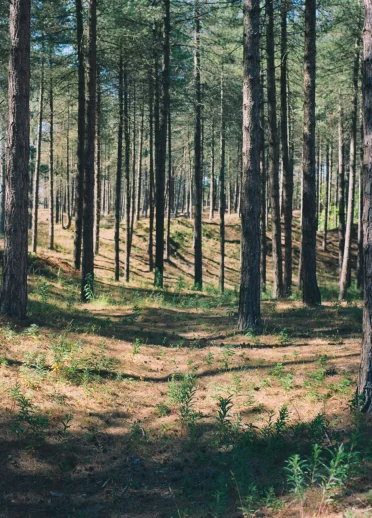
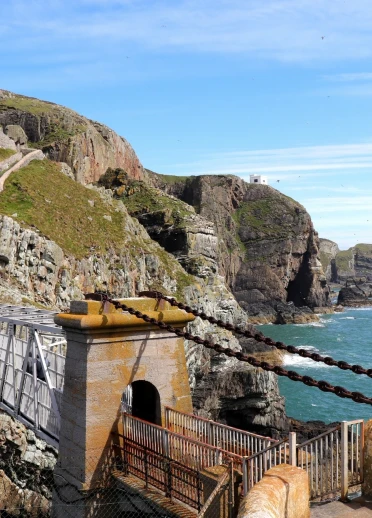
The unique environment of Cemlyn Bay was created by an eccentric millionaire, Captain Vivian Hewitt. An aviation pioneer and avid birder, he created a brackish lagoon as a sanctuary for birds. You can see the Wylfa nuclear power plant in the distance and it adds a certain surreal quality to a place I find myself instantly attracted to. The dense, low cloud and the fine, misty rain just add to the special atmosphere. I stand on a finger of shingle beach separating the sea from the lagoon.
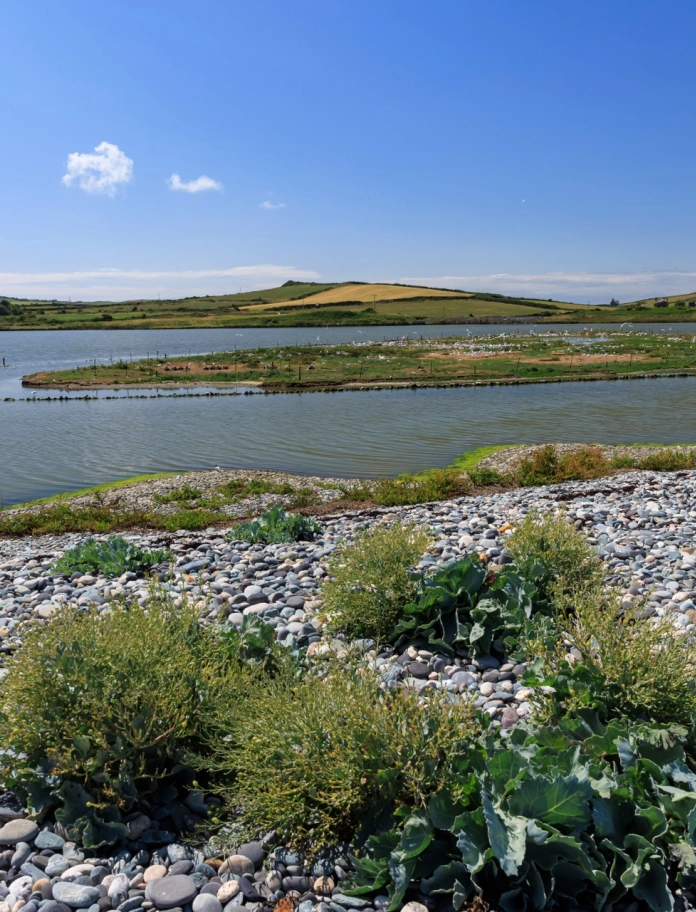
Cemlyn Bay has a rich ornithological heritage. It’s home to the only colony of sandwich terns in Wales. Sightings also include a bridled tern (1988) and an isabelline shrike (1998). In 2005 a sooty tern, an American golden plover and a terek sandpiper all made appearances. My birding instincts kick in as I begin to decipher all the waders that are gathered along the lagoon’s shore. Curlew, grey plover, knot and common sandpiper, with a kingfisher that shoots into view.
There are no guest appearances today, but that doesn’t matter one bit. I could easily spend a week rooted to the spot, in this slightly other-worldly corner of Wales. But I can’t. As darkness descends and I drive off into the night, I wonder to myself whether after all these years, I’ve found a corner of this country to call my own. I’ll certainly be back before too long.
